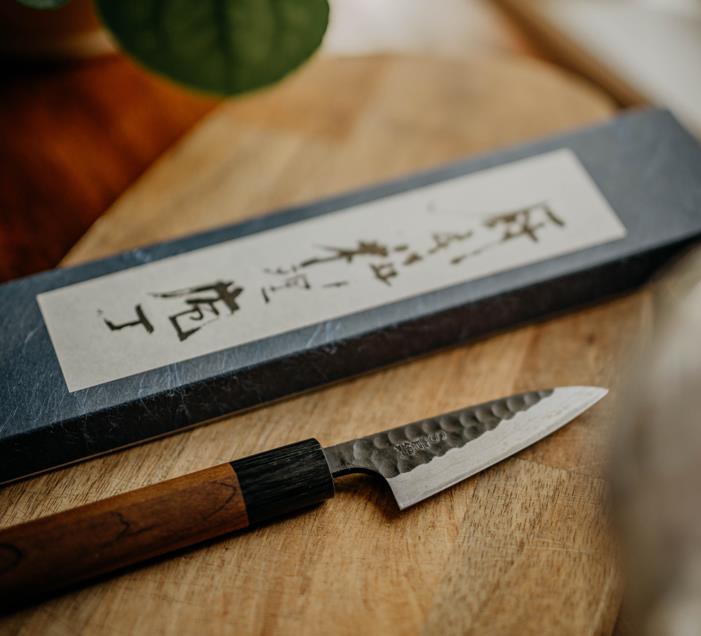There’s a certain magic about a well-crafted kitchen knife; it’s not just a tool, but an extension of the chef’s hand. Today, we’re going to delve into one of the finest examples of culinary craftsmanship: the Japanese chef knife. In this article, we’ll explore the rich history behind these blades, and the meticulous process that goes into making each one. So let’s take our first step into this fascinating world.
Unearthing the History
The story of Japanese chef knives, known locally as “Hocho,” stretches back over a thousand years to Japan’s Heian period. This was a time of cultural blossoming when the techniques of Japanese blacksmiths were first being honed. The artistry that arose during this period laid the foundation for the creation of today’s Japanese chef knives, making them a pivotal piece of Japan’s historical tapestry.
Warriors to Blacksmiths: The Samurai Connection
In understanding the craftsmanship behind Japanese chef knives, we can’t overlook the historic samurai warrior class. Samurai swords, or “Katanas,” were world-renowned for their sharpness and unique curvature. The same level of precision and dedication that went into forging these weapons can be seen in the creation of Japanese chef knives.
This connection is far from coincidental. As the era of the samurai waned, many blacksmiths pivoted from crafting weapons of war to instruments of peace. They brought with them their meticulous techniques and high standards, resulting in kitchen knives with unrivaled sharpness and balance.
The Journey of a Single Blade
Creating a Japanese chef knife is a process steeped in tradition and exactitude. The journey begins with selecting the right steel. This choice is crucial as the type and quality of steel directly impact the knife’s durability, sharpness, and ease of maintenance.
Next comes forging, a process that involves heating the steel to extremely high temperatures, then hammering it to shape the blade. This step requires immense skill and precision, as any inconsistency can compromise the blade’s quality.
Once the blade has been shaped, it’s then heat-treated to increase its hardness, a step that will dictate its edge retention. The blade is then sharpened, first with a coarse stone to form the edge, then with finer stones to refine it. The final result is a razor-sharp, durable, and balanced knife.
A Symphony of Styles
Over centuries, different regions in Japan have crafted their unique styles of chef knives. For instance, Sakai, a city in Osaka, is famed for its single-bevel blades ideal for precision tasks. On the other hand, Seki, a city in Gifu, is renowned for its robust, high-quality steel chef knives.
There’s a knife for every culinary task in the Japanese kitchen, from the Yanagiba, a narrow, thin knife for slicing fish, to the Usuba, a knife designed with vegetable chopping in mind. Each knife is a reflection of the diverse food culture of Japan.
An Ongoing Legacy
Today, the craftsmanship of Japanese chef knives remains a revered tradition. Many workshops continue to respect age-old techniques, honoring the legacy of their forebears. The knives produced in these workshops aren’t mere tools; they’re a testament to Japan’s rich cultural heritage and the spirit of its people. Each knife encapsulates the blacksmith’s dedication and expertise, making it a beloved addition to any kitchen.
In essence, a Japanese chef knife is more than a culinary instrument. It’s a symbol of history, craftsmanship, and tradition. The process that each knife undergoes before it reaches your hand is one of careful selection, precise shaping, and diligent refinement. Each knife is a manifestation of the Japanese pursuit of perfection, making it a treasured part of the global culinary scene.
We hope that this exploration into the history and creation process of Japanese chef knives has provided you with a richer appreciation for these culinary masterpieces. Stay tuned for more culinary journeys as we continue to explore the fascinating world of kitchen essentials!
